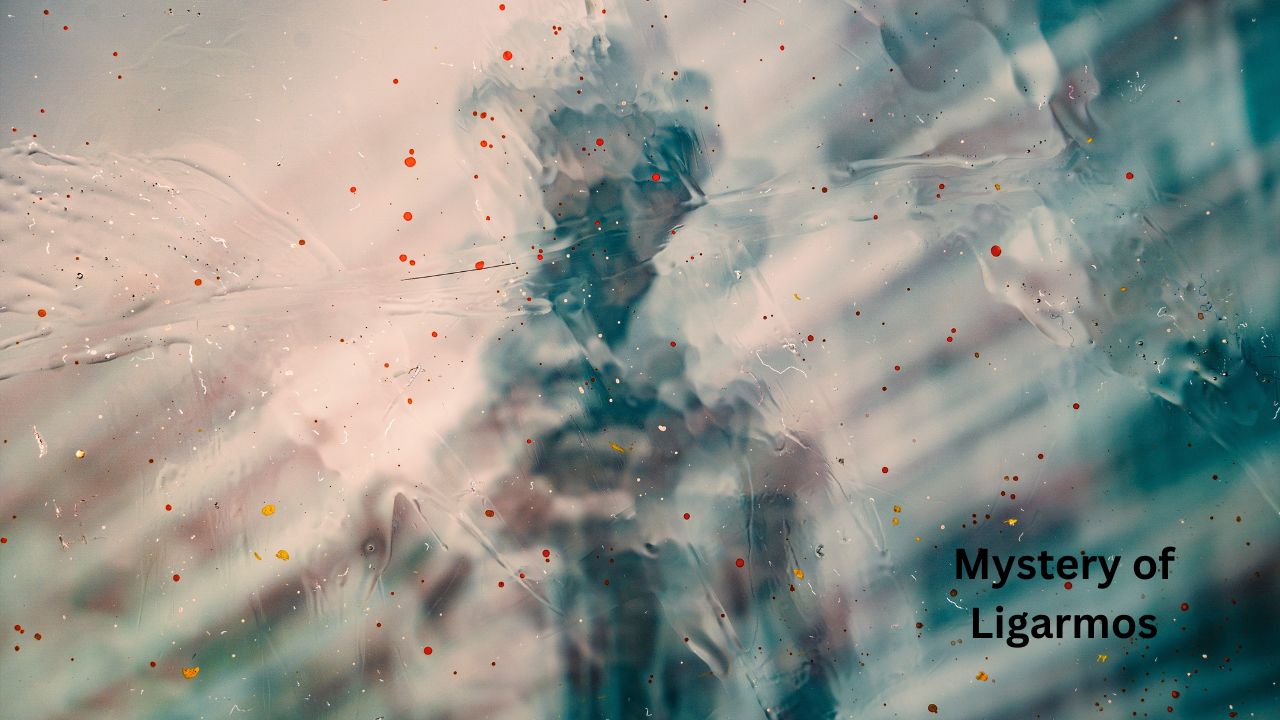Welcome to the mysterious world of Ligarmos – a creature that has captivated the imaginations of adventurers, scientists, and nature enthusiasts alike. With its enigmatic origins and unique physical characteristics, this elusive species continues to baffle researchers even to this day. Are you ready to embark on a journey filled with intrigue and excitement? Join us as we delve into the depths of knowledge about Ligarmos and unravel the secrets surrounding this remarkable creature!
Physical Characteristics and Habitat of Ligarmos
Ligarmos, a mysterious creature that roams the depths of remote forests and mountains, possesses a striking appearance. With its sleek body covered in thick scales, it resembles a hybrid between a reptile and a mammal. Its coloration varies from deep green to earthy brown, allowing it to blend seamlessly with its surroundings.
One of the most remarkable features of Ligarmos is its sharp claws that are perfectly adapted for climbing trees and grasping prey. These claws enable it to scale high branches with ease or swiftly descend when hunting on the forest floor. Additionally, Ligarmos boasts powerful hind legs which provide exceptional agility during pursuit.
Habitat of Ligarmos:
Ligarmos primarily inhabit dense forests where it can find ample cover and prey opportunities. It prefers areas with abundant vegetation as well as rocky outcrops for resting and sunbathing. While they are known to have an extensive range across different continents, finding them remains incredibly challenging due to their elusive nature.
These creatures often seek solace in secluded caves or hidden crevices within cliffs during harsh weather conditions or while rearing their young. The ability to adapt to various environments makes Ligarmos highly adaptable when faced with changing habitats caused by human activities or natural phenomena like wildfires.
Stay tuned for our next blog section where we’ll delve into the intriguing diet and hunting behavior of this enigmatic species!
Diet and Hunting Behavior
Ligarmos, with its sleek and powerful physique, is an incredibly efficient predator. Its diet primarily consists of small mammals such as rabbits, squirrels, and mice. However, Ligarmos has been known to occasionally take down larger prey such as deer or even livestock when the opportunity presents itself.
What truly sets Ligarmos apart is its hunting behavior. It possesses exceptional stealth and agility that allow it to silently stalk its prey before delivering a lightning-fast attack. With razor-sharp claws and teeth designed for tearing flesh, Ligarmos quickly subdues its victims.
Ligarmos utilizes a combination of patience, strategy, and speed in its pursuit of food. It often relies on camouflage to blend seamlessly into its surroundings while patiently waiting for the perfect moment to strike. Once it senses weakness or vulnerability in its target, it pounces with remarkable precision.
This cunning predator also demonstrates impressive adaptability when it comes to hunting techniques. Whether stalking through dense forests or traversing vast grasslands, Ligarmos effortlessly adjusts its tactics based on the terrain and available prey.
Understanding the intricacies of Ligarmos’ diet and hunting behavior not only offers insights into this captivating creature but also provides valuable knowledge for wildlife conservation efforts. By studying how Ligarmos interacts with ecosystems and adapts to different environments, we can better protect both this majestic predator and its delicate habitats.
Reproduction and Life Cycle
The reproduction and life cycle of Ligarmos is a fascinating process that highlights the resilience and adaptability of this mysterious creature. Breeding typically occurs during the warmer months when food sources are abundant, allowing for optimal conditions for survival.
Female Ligarmos lay their eggs in carefully constructed nests hidden among dense vegetation or underground burrows. These nests protect from predators and ensure the safety of the developing offspring.
After a gestation period of approximately four to six weeks, the eggs hatch, giving rise to tiny, vulnerable Ligarmos hatchlings. These young creatures possess an innate instinct for survival as they navigate their way through their environment.
As they grow older, Ligarmos undergo a series of molts, shedding their old exoskeletons to accommodate their expanding bodies. This process allows them to adapt to changing environmental conditions and ensures their continued growth and development.
During this time, Ligarmos learn essential hunting skills from observing adult members of their species. They gradually become proficient hunters themselves, honing their abilities through trial and error in capturing prey.
It is important to note that while some aspects of the reproduction and life cycle have been observed by researchers, many details remain unknown due to the elusive nature of these creatures. Continued research efforts are crucial in unraveling more about this enigmatic species.
Understanding the intricacies of Ligarmos’ reproduction and life cycle provides valuable insights into its ecology and behavior. By gaining knowledge about these processes, scientists can develop effective conservation strategies that will help protect this captivating creature for generations to come.
Interaction with Humans
The interaction between Ligarmos and humans is a topic that has fascinated scientists and researchers for decades. With their elusive nature and ability to camouflage with their surroundings, these creatures have managed to keep most human encounters at bay.
One of the reasons why there is limited interaction between Ligarmos and humans is due to their preference for remote habitats. Found primarily in dense forests and mountainous regions, they are adept at staying hidden from prying eyes. This has made it challenging for researchers to study them up close.
However, there have been reports of occasional sightings by local communities living near Ligarmos’ habitat. These sightings often fuel myths and legends surrounding the creature. Tales of its mythical powers and mysterious behavior have been passed down through generations.
While some may view these encounters as mere folklore, others believe that there might be some truth behind these stories. However, concrete evidence regarding the true nature of Ligarmos-human interactions remains scarce.
Efforts are being made by conservation organizations to raise awareness about this enigmatic creature among local communities. Education programs aim to dispel misunderstandings while promoting coexistence between humans and Ligarmos in their natural habitats.
Understanding how we can peacefully coexist with such unique species like the Ligarmos is crucial for our own well-being as well as theirs. By respecting their need for privacy while protecting their habitats from encroachment or destruction, we can ensure that future generations will continue to marvel at the beauty of this captivating creature.
Conservation Efforts for Ligarmos
Protecting the extraordinary Ligarmos is a crucial mission that requires our immediate attention and action. As human activities continue to encroach upon their habitats, these incredible creatures are facing numerous threats to their survival. Fortunately, dedicated conservation organizations and passionate individuals are working tirelessly to ensure the long-term survival of this enigmatic species.
One of the key efforts undertaken by these conservationists is the preservation of Ligarmos’ natural habitat. By identifying and protecting critical areas where they thrive, such as dense forests or remote mountain ranges, we can help provide them with a safe space to live and reproduce. This involves collaborating with local communities and governments to establish protected areas, enforce regulations against illegal logging or hunting, and promote sustainable land-use practices.
Another important aspect of ligarmos conservation is raising awareness among both locals and visitors about the significance of preserving this unique creature’s existence. Education campaigns focused on highlighting their ecological importance as top predators in maintaining balanced ecosystems can encourage people to take action to safeguard their future.
Additionally, researchers are conducting studies on ligarmos behavior patterns, migration routes, and population dynamics. These scientific endeavors help gather valuable data that inform conservation strategies aimed at minimizing human-wildlife conflicts while ensuring genetic diversity within ligarmos populations.
Efforts also extend beyond boundaries through international collaborations between countries where ligarmos reside. Sharing knowledge, expertise, resources facilitates better protection measures across borders while promoting transboundary initiatives like wildlife corridors for seamless movement between different habitats.
Furthermore, engaging local communities in sustainable livelihood alternatives can reduce dependency on activities detrimental to limos habitats while providing economic incentives tied directly to conserving this magnificent species.
In conclusion (as per writing instructions), it’s imperative that we join hands together – individuals,
communities governments worldwide -to preserve nature’s masterpiece –the wondrous Ligamros! Let us pledge our support towards ongoing conservation efforts so that future generations can continue to marvel at these extraordinary creatures. The time to act is now
Conclusion: Why We Should Continue to Learn About This Fascinating Creature
The Ligarmos, with its mysterious origins and unique physical characteristics, is truly a captivating creature. From its vibrant colors and impressive size to its agile hunting abilities, the Ligarmos is a remarkable predator that deserves our attention.
By understanding more about the Ligarmos’s habitat and behavior, we can gain valuable insights into the delicate balance of ecosystems where it resides. The knowledge we gather can help us develop conservation strategies to protect not only this incredible creature but also the diverse habitats it calls home.
Furthermore, studying the Ligarmos allows us to appreciate the wonders of nature and realize how interconnected all living organisms are. By unravelling the secrets of this enigmatic species, we unlock a deeper understanding of our own place in the natural world.
So let us continue our quest for knowledge about the Ligarmos! Through ongoing research efforts and conservation initiatives, we can ensure that future generations will have an opportunity to witness firsthand these magnificent creatures roaming freely in their natural habitats.
Together, let’s embrace curiosity and explore further into unraveling the mystery of Ligarmos – a fascinating creature that reminds us how important it is to preserve Earth’s biodiversity for generations to come.

 ENTERTAINMENT5 months ago
ENTERTAINMENT5 months ago
 FASHION7 months ago
FASHION7 months ago
 TRAVEL6 months ago
TRAVEL6 months ago
 NEWS7 months ago
NEWS7 months ago
 BUSINESS7 months ago
BUSINESS7 months ago
 FASHION5 months ago
FASHION5 months ago
 ENTERTAINMENT5 months ago
ENTERTAINMENT5 months ago
 TECH7 months ago
TECH7 months ago





